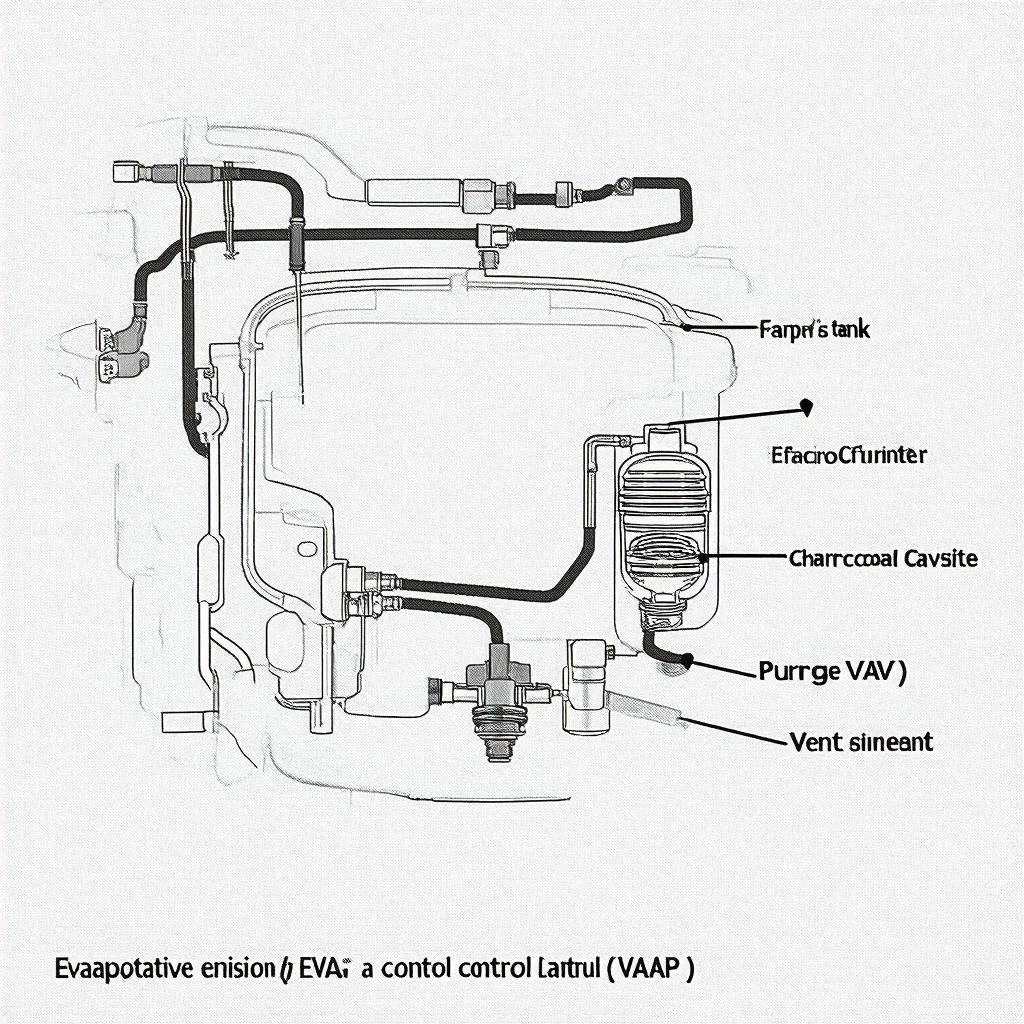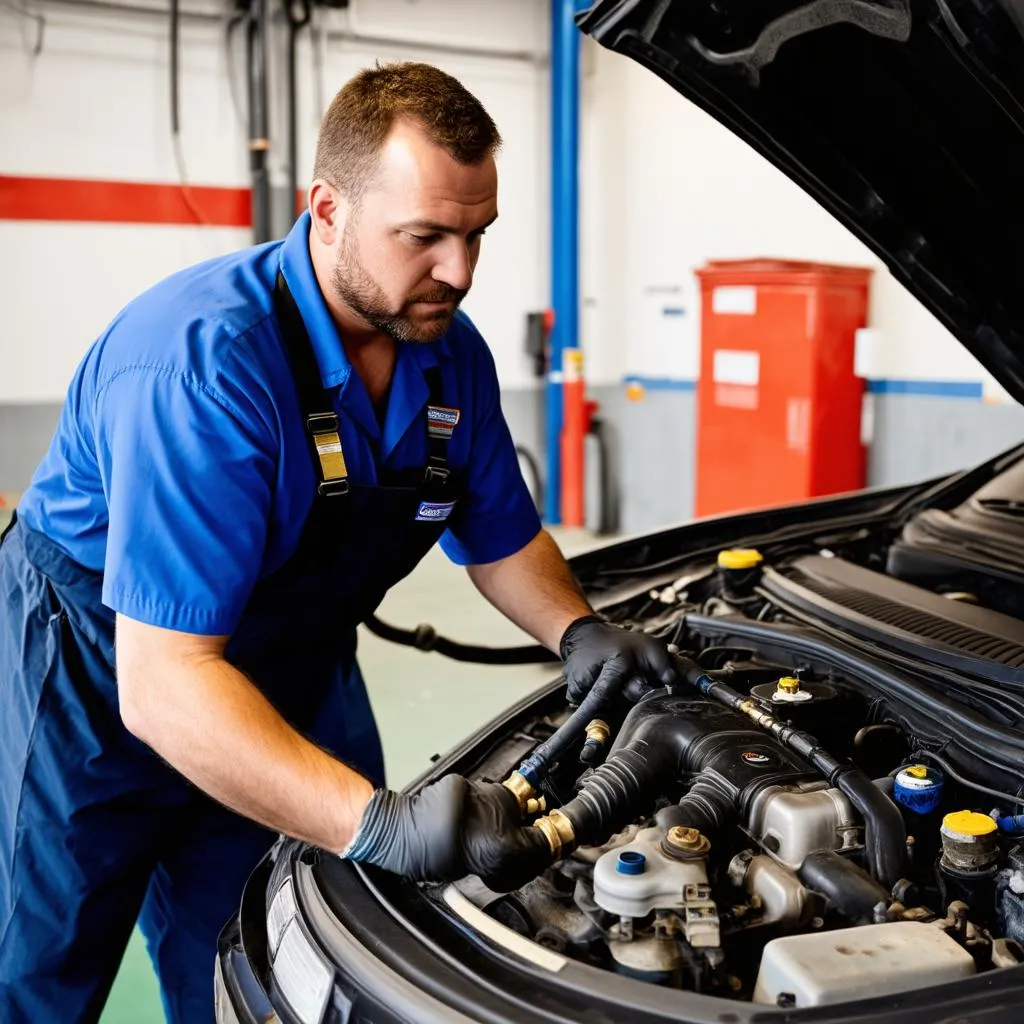“Check engine” light glaring at you again? You hook up your trusty OBD2 scanner, hoping for an easy fix, but then you see it: the dreaded P0440 code. Don’t panic! We’ve all been there. It feels like your car is speaking a foreign language, but understanding this code is easier than you think. Think of us at techcarusa.com as your trusty translators, here to demystify the cryptic world of car codes and get you back on the road.
P0440: A Breakdown in Communication
In essence, P0440 means your car’s computer has detected a leak somewhere in the Evaporative Emission Control (EVAP) system. Imagine this system as a series of sealed components and hoses responsible for capturing and purging fuel vapors. These vapors, instead of polluting the air, are routed back into the engine to be burned.
Now, imagine a garden hose with a tiny hole. It still works, right? But that small leak wastes water and reduces efficiency. That’s essentially what’s happening with your EVAP system when you see P0440.
 EVAP System Diagram
EVAP System Diagram
Why Should You Care About a “Small Leak”?
You might be tempted to ignore the P0440 code, especially if you don’t notice any performance issues. But just like ignoring a small leak in your house, neglecting this code can lead to bigger problems down the line:
- Environmental Impact: Remember those harmful fuel vapors? A leak means they are escaping into the atmosphere, contributing to pollution.
- Fuel Economy: A malfunctioning EVAP system can throw off your car’s air-fuel mixture, impacting your gas mileage and costing you money at the pump.
- Failed Emissions Test: In many states, a P0440 code will cause you to fail your emissions test.
Common Culprits Behind the P0440 Code
Many components can be the source of a P0440 code. Some common culprits include:
- Loose or Damaged Gas Cap: This is often the easiest and least expensive fix.
- Faulty Purge or Vent Valve: These valves control the flow of vapors within the EVAP system and can wear out over time.
- Cracked or Damaged EVAP Lines: Hoses and lines within the EVAP system can crack or become disconnected, causing leaks.
- Damaged Charcoal Canister: This canister stores fuel vapors and can become saturated or damaged, leading to a leak.
 Car Engine Inspection
Car Engine Inspection
Tackling P0440: What to Do Next
Seeing P0440 doesn’t have to be a nightmare. Here’s a simple action plan:
- Check the Gas Cap: Ensure it’s tightly sealed. If it’s damaged or old, replace it. You might be surprised how often this simple fix does the trick.
- Consult a Professional: If the gas cap isn’t the issue, it’s best to consult a qualified mechanic specializing in automotive diagnostics. They have the tools and expertise to pinpoint the exact cause of the leak.
Remember, ignoring the problem will only make it worse and potentially lead to more costly repairs in the future.
FAQs about OBD Code P0440
Q: Can I drive my car with a P0440 code?
A: While you can technically still drive, it’s not advisable to ignore the code. It’s best to address the issue as soon as possible to prevent further damage and potential safety hazards.
Q: How much does it cost to fix a P0440 code?
A: The cost can vary significantly depending on the root cause. A simple gas cap replacement might cost you under $20, while replacing a charcoal canister could cost several hundred dollars.
Q: Can I fix a P0440 code myself?
A: While some fixes might be simple DIY tasks (like replacing the gas cap), it’s generally recommended to seek professional help, especially for more complex repairs.
Need Expert Help with Your OBD Codes?
We understand that dealing with car trouble can be stressful. That’s why we’re here to help! At techcarusa.com, our team of expert mechanics is just a message away. If you’re facing the P0440 code or any other automotive issue, don’t hesitate to reach out to us via Whatsapp at +84767531508. We’re available 24/7 to provide you with the support and guidance you need to get back on the road safely and efficiently.